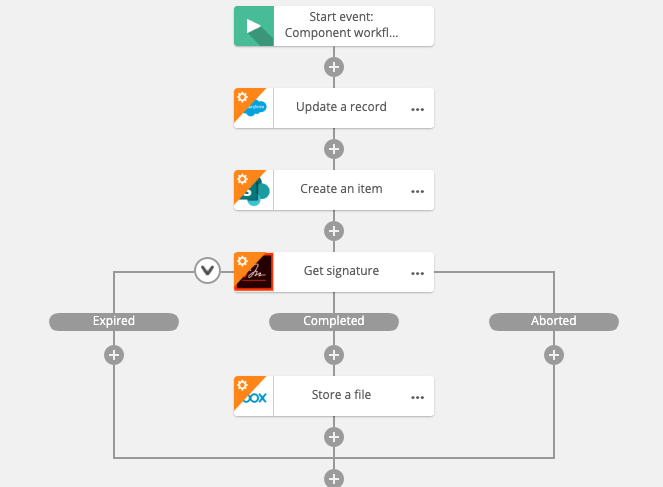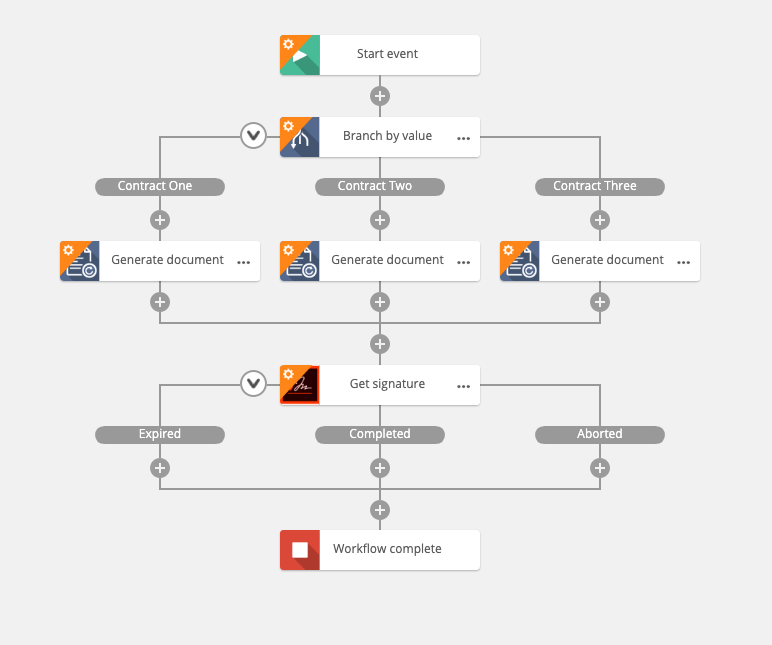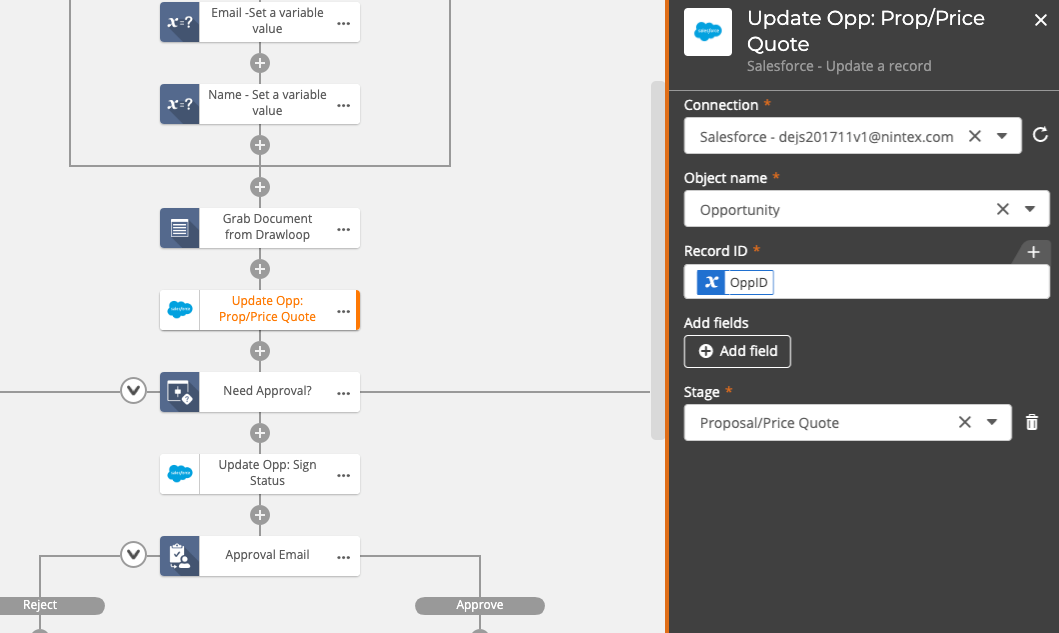So whenever you send out this contract please make sure to update the status of the Salesforce Opportunity. Also make sure the correct Sharepoint list has the same status. Also after everything is said and done and the contract is signed make sure to save the final version in a folder in Box… Not hard to handle this when you have done it hundreds of times. When you are new to an organization this can be a bit to learn. What happens when your sales team goes from 5 to 30 overnight? How do you minimize mistakes and ramp up user adoption?

The majority of the time when task and updates need to be done and updated in this manner logic typically exists to dictate next steps.
If this… then… do that…
As mentioned above this can be a bit of a learning curve for one use case. But most of us have more then one task type a day. In addition when you want to scale employee size and expand knowledge this manual process could be difficult to adopt.

No matter how simple or complex… when automation exists… its very satisfying to not have to remember to do something.
When I walk into my dark garage the lights turn on based on motion. Simple but helpful. When I’m holding boxes with both hands its useful… and when my folks walk in they don’t have to find the light switch. (which is hard to find… why did they place the switch in such a… anyways…)
The point here is automation doesn’t have to be complex to be powerful. In the example I give in the beginning we need to update stages in two places with the same content and save something in a specific place.

Not a hard couple steps to remember but still opportunities for human error exist. Missing something for simply being new or just overlooking can exist in any task work related or personal.
Steve is new to working at Safalo Car Company. Safalo is located in all 50 states. Steve is one of 5 new hires at this specific dealership. The main part of the job past sales is knowing which contracts for a customer to sign. Being in California its really easy to surface the correct forms when the car waiting to be purchased is located in California and the customer is also from California…
But…
What if…
The Car is in Texas and the customer is from Nevada. The contracting can get complicated. Different systems need to be used to pull data from. Contract language can be different per state. The point here is many factors can complicate this but automation can simplify it.
What do we know: Steve works at an office in California.
What we need?
Car location:
Customer Location:
Location + Location + Location = Correct Contract.

Looking at use cases like this has Steve focusing more on customers and sales… and less on worrying about getting the wrong contract signed.
For example the workflow can drive what data needs to go where.
Helpful Blog: Conditional Processes
"The contract has gone out. Is the status updated?"

Use actions to let users know things are happening. In addition to automation knowing the automation is happening is also an important part (my opinion) for the end users experience. Having a field like “Workflow Status” in the system a user lives and breaths in can be very helpful.
Hey Steve has the contact gone out?

Also make sure you are using Promapp to figure out how to map these use cases out.
Thanks for Reading!
-Dave

